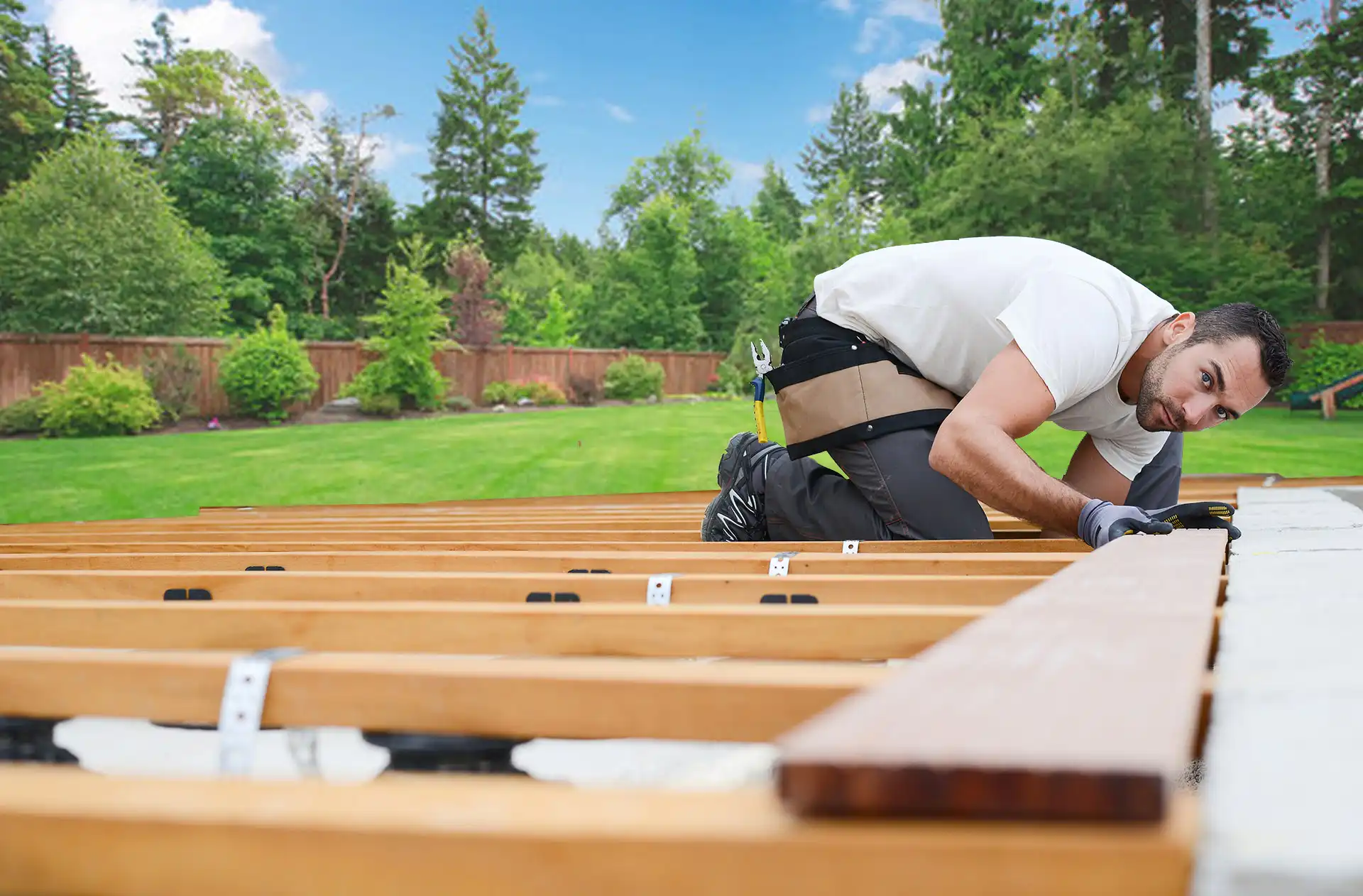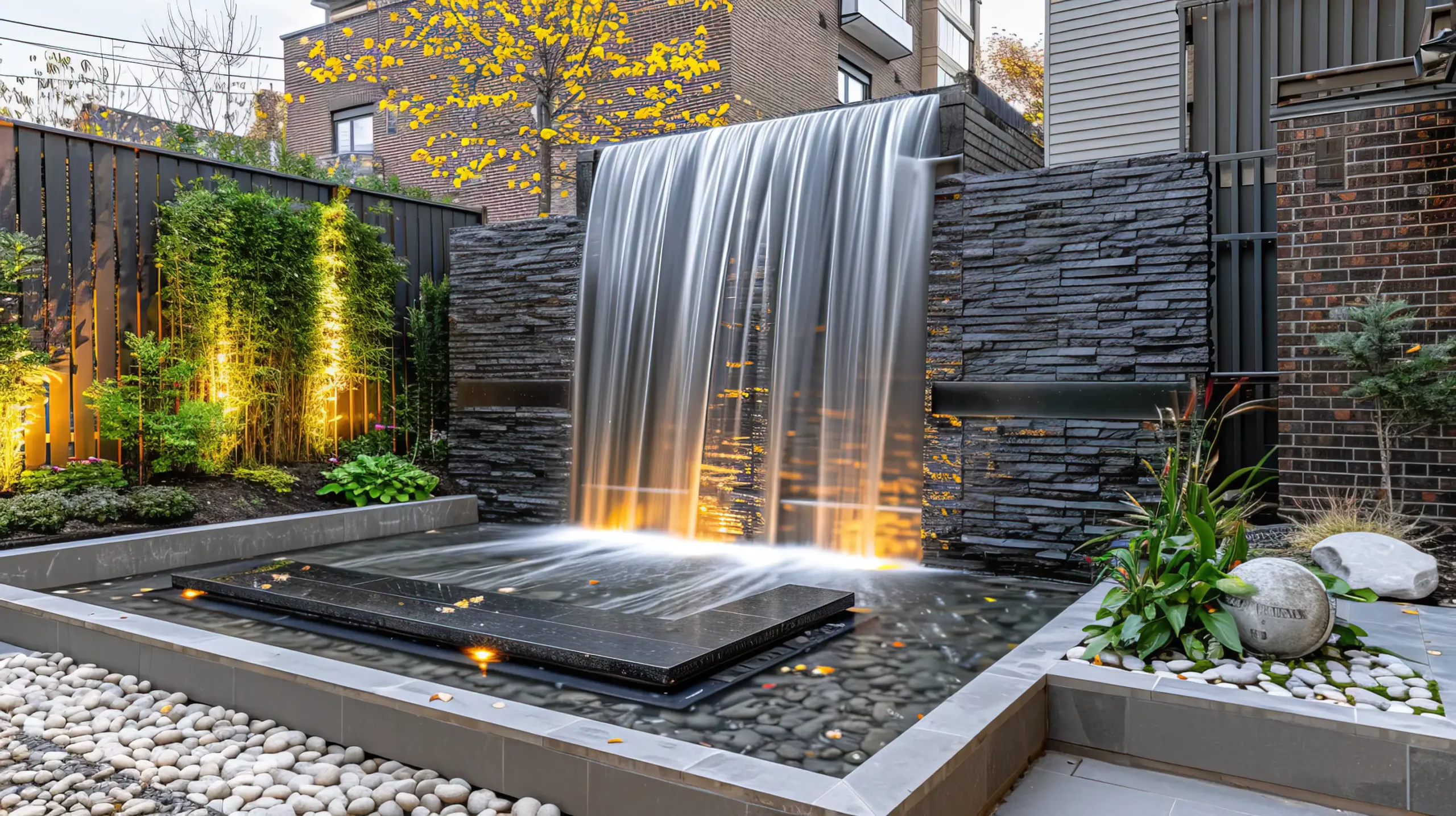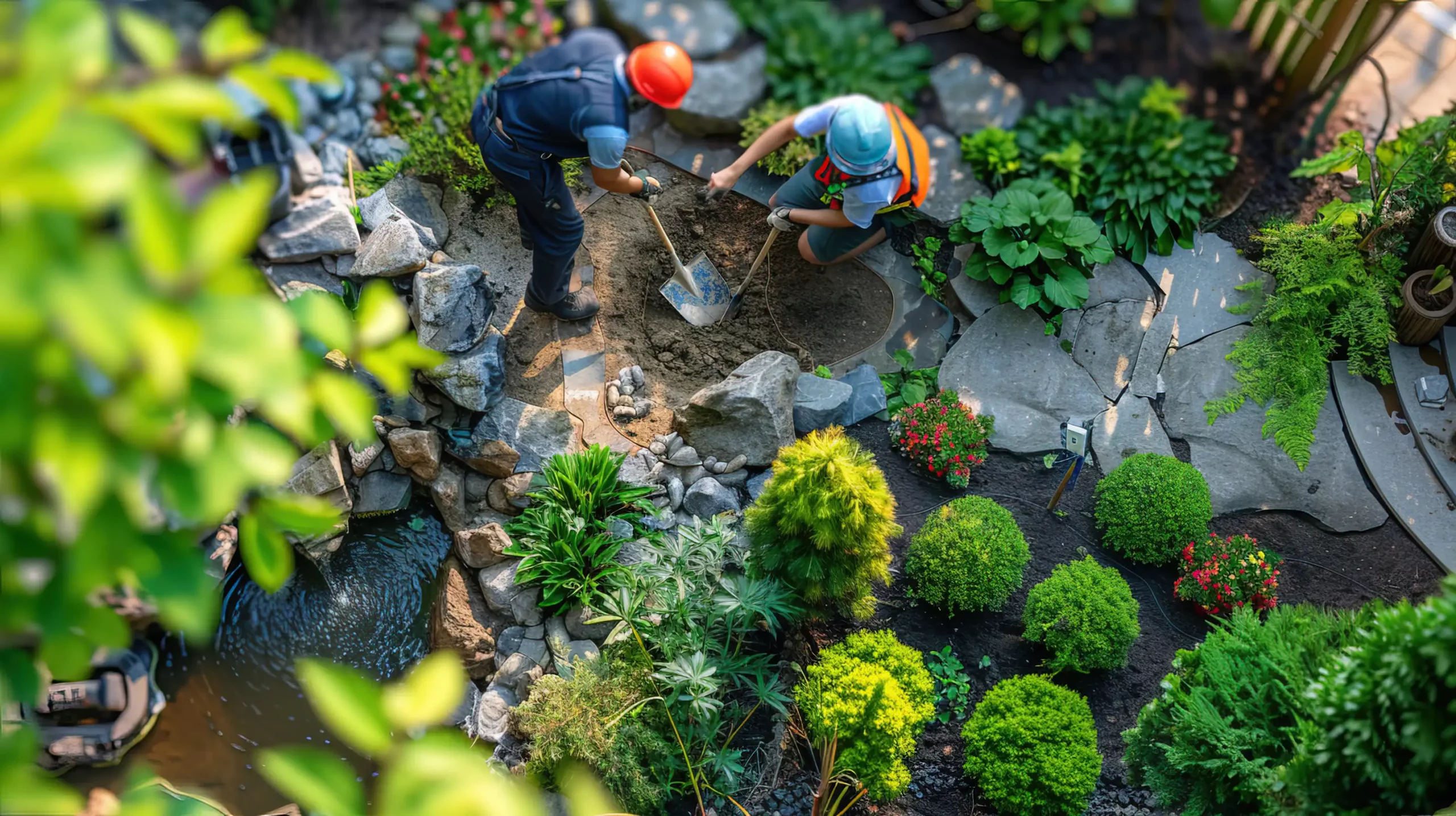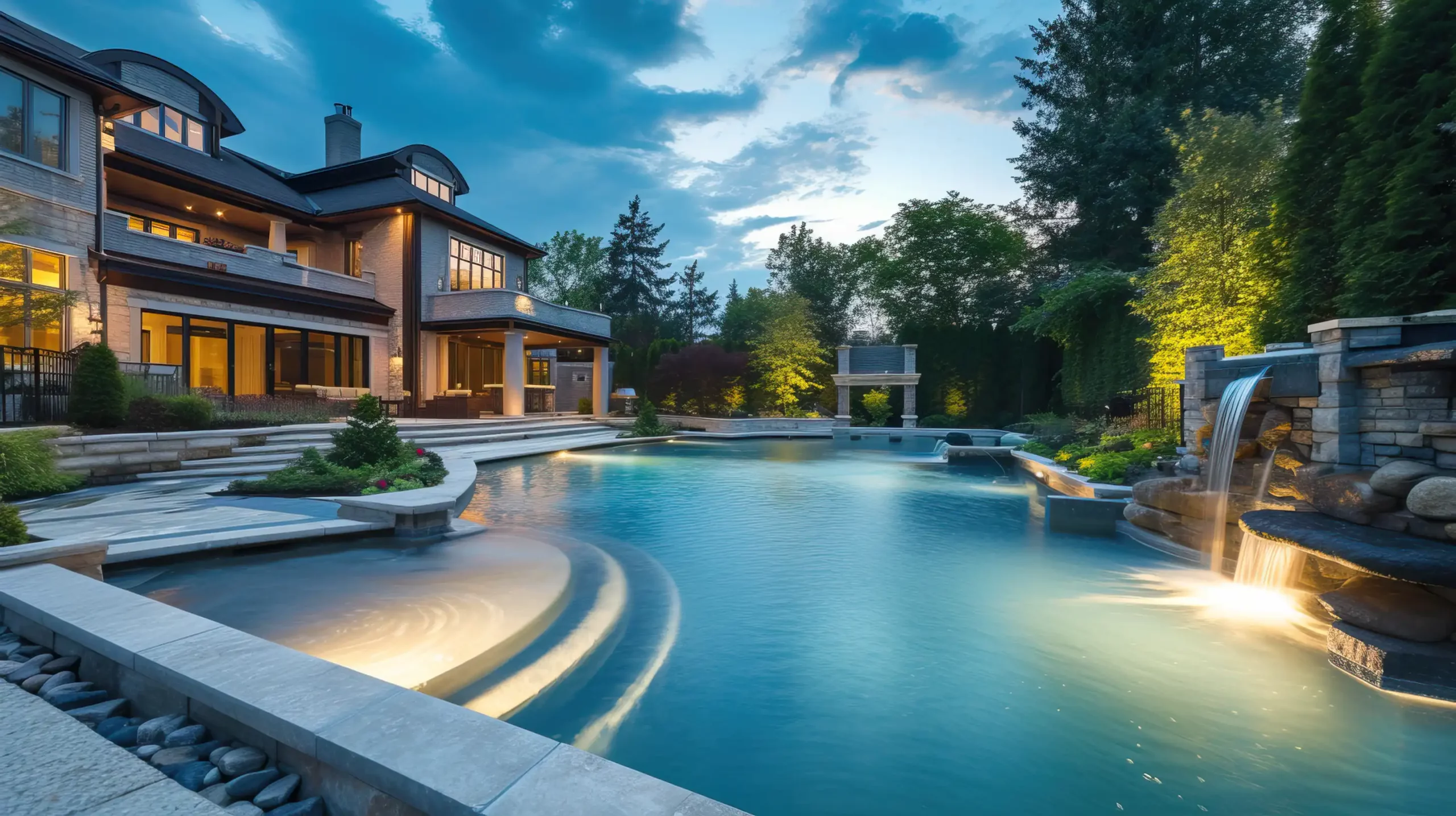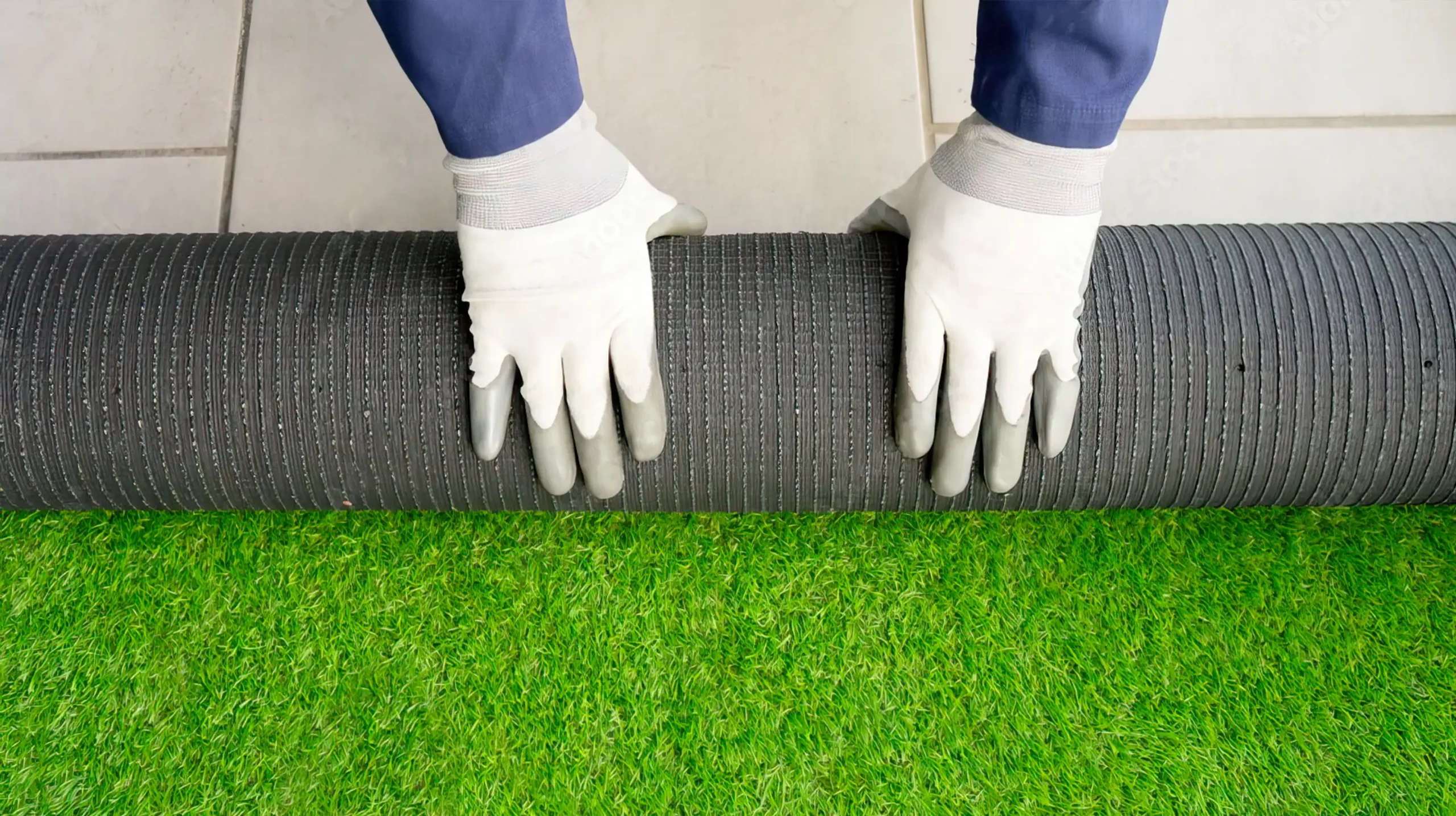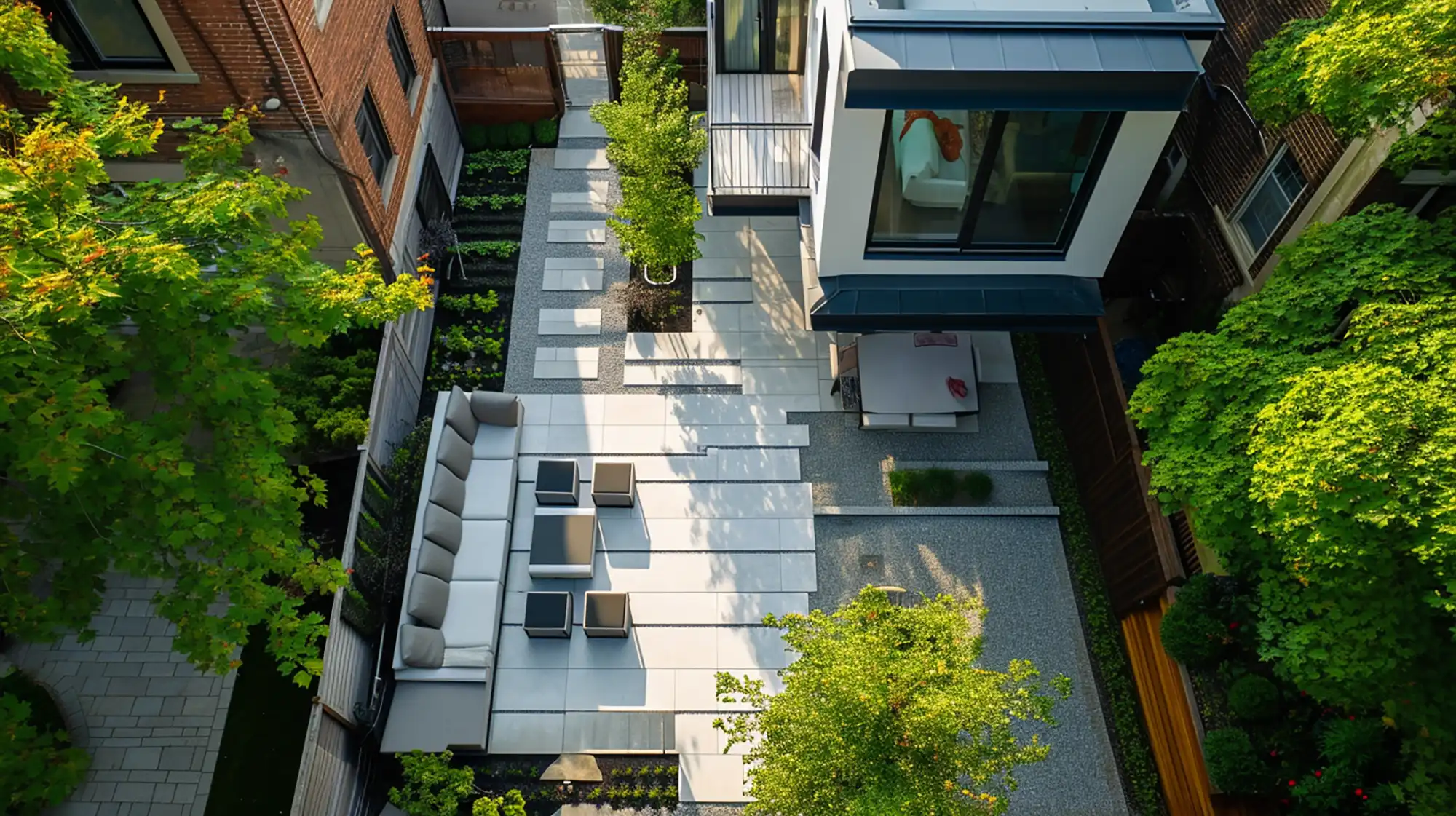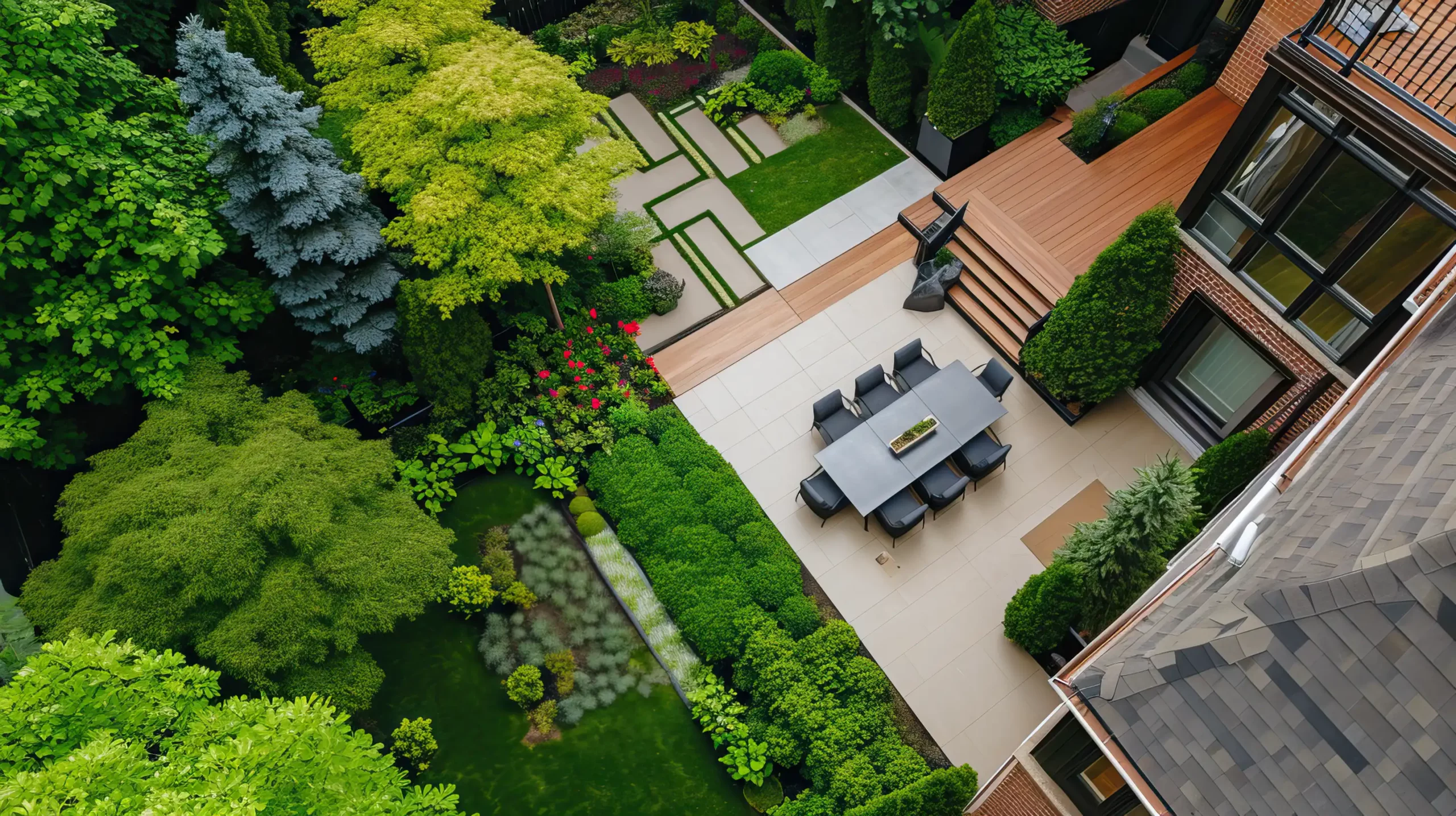Many homeowners cannot complete their backyard dream without the addition of a deck, which is a fully functional floor that seamlessly integrates interior living areas with exterior entertaining spaces. The trend towards composite deck building is growing, as these materials are used in an increasing number of projects, offering limitless design possibilities. With a growing selection of colors, wood grain patterns, profiles, and material types, the composite decking selection has never been better and is proving to be a wise choice for consumers. This surge in preference for composite materials underscores their durability and aesthetic flexibility, making them an excellent choice for modern outdoor spaces.
What is composite decking?
Composite decking, a relatively new building material, is crafted by combining recycled plastics with reconstituted wood fiber, rice hulls, bamboo fiber, and other organic materials. Its uniform and consistent nature makes it easier to cut and work with than traditional wood. This versatility is particularly beneficial in the composite deck building process, accommodating today’s varied and innovative deck designs. Growing in popularity, especially for decks around swimming pools, composite decking resists moisture and avoids many common issues associated with wood decking, such as fading, cracking, splitting, splintering, mold, and rotting. Additionally, it eliminates the need for frequent treatment and sealing, making it a practical choice for modern construction.
Build your deck with composite boards.
The advantages of composite materials
While a wooden deck may cost less to build, there are ongoing seasonal costs to maintain and repair it. With a composite deck, the entire investment is upfront; the only ongoing costs are minimal, such as annual cleanings. Typically, one realizes savings quickly. Manufactured composite decks don’t require treatment, staining, or sanding to maintain their new appearance. This alone can save hundreds or even thousands of dollars over the deck’s lifespan. Composite decking boards rarely require replacement due to their resistance to cracking, splitting, or rot, leading to significant cost savings, especially in the initial five to ten years.
Choose composite decking for expert results.
Another advantage of composite decking is its uniform appearance, color consistency, and warranty. Depending on the product, warranties can range anywhere from 15 years to lifetime coverage for things like rot and decay, manufacturing defects, and general product failure. This gives the purchaser security in the event there are any defects or issues with the product; with wood, there are typically fewer warranties. Another key feature of composite deck materials, especially when used around swimming pools and hot tubs, is their design, which prevents slipping in wet conditions. Typically, the surface feels comfortable and safe to walk on, even for children in bare feet, and it doesn’t heat up under the intense sun’s rays like a wood deck would. Cleaning and stain removal are also generally easier in comparison to wooden decks.
Deck Materials: Solid, Hollow, or Ribbed Composite Boards
There are as many as 30 brands of composite decking materials on the market today. Among the various brands, there are three types of composite material, each with a variety of features and options. Polyethylene (PE)-based materials, comprising wood or wood-fiber blends with plastic, hold a large share of the market. Because it is oil-based, the material is slightly softer and easier to work with, but it reduces the board span between joists. When the seasons change and temperatures fluctuate, this material will also expand or contract. People also claim that PE-based materials most closely resemble wood.
Polypropylene (PP)-based materials, containing 50 percent or more reclaimed hardwood lumber, are generally stronger, with greater resistance to expansion and contraction than PE-based materials. This allows builders to increase the board span and space joists further apart. During the manufacturing process, special pigments impregnate some products, designed to protect the color from ultraviolet (UV) light, fading, and wear and tear.
Polyvinyl chloride (PVC)-based materials manufacture non-wood plastics, which are plastic-based and do not contain any wood content. Similar to PE-based materials, PVC decking products can mimic wood, but it’s important to consider design considerations like joist spacing and board spans. Unlike wood, PVC materials will not stain or absorb water.
Composite decking is available in solid, hollow, or ribbed profiles. Solid profiles offer a robust material, emulate the appearance of real wood, and simplify the process of finishing edges with a saw or router. Although hollow and ribbed profiles are lighter and less prone to expansion or contraction, they require special trims and end caps for finishing. Some composites are also available in a tongue-and-groove (T&G) profile.
Using Composite Decking: Finishes, Textures, and Fasteners
Most composite boards are uniform in color and available in various finishes and textures, such as smooth, brushed, or wood-grain surfaces. A good texture is important on pool decks; e.g., composite decking with an embossed wood-grain finish offers three times the anti-skid characteristic of wood and a splinter-free surface. Composites can also replicate the look of hardwoods with a color-streaking process in addition to the embossed wood grain finish.
Many hidden fastening systems, which provide a cleaner appearance and eliminate staining issues associated with nails and screws, are available for today’s composite decking materials. It is important to follow the manufacturer’s recommendations when it comes to installation; e.g., some composite decking cannot be nailed, while others must be pre-drilled before being fastened to the frame with screws.
Deck Installation: Fascia Boards, Railing, and Trim Options
Many manufacturers have other profiles available, such as railings, fascia boards, trim, molding, risers, and end caps. These allow the builder to complete the deck project and add finishing details without using other types of materials.
Improving Technology in Composite Deck Building
When composite decking was introduced, manufacturers made claims that it was maintenance-free and would not stain or fade. The truth is, this material is not perfect and does have its own problems. Certain products have been susceptible to mold, as most composites contract and expand with temperature change. Some can become stained, which can be difficult to address, while all composites can become scratched, scuffed, or fade to some degree. The advantages generally outweigh the limitations of polymer composites. Although composites can never completely replace the natural beauty and feel of real wood, their man-made nature allows for improvements. Generally, manufacturers manufacture today’s polymer composites with solid PVC ingredients and minimal or no organic filler, which reduces their susceptibility to mold due to moisture and other elements.
The current generation of composite materials, integral to composite deck building, also strives for a more natural appearance and enhanced stain and fading resistance. Harder surfaces are not as scratched or scuffed as composites made with organic fibers. Additionally, most composite boards have been weather-tested to withstand extreme climates, making them a viable option for any Canadian region. Within the next 10 years, composite decking has the potential to become a mainstream product. As more and more consumers become aware of the benefits of this material and manufacturers improve its quality, it will become a more likely choice for any consumer.
Step-by-step deck construction
With more than 25 years in the building materials industry and 12 years in the deck business, Stan Weiland is the general manager of The Deck Store, located at 454 South Service Rd. W., Oakville, ON.

